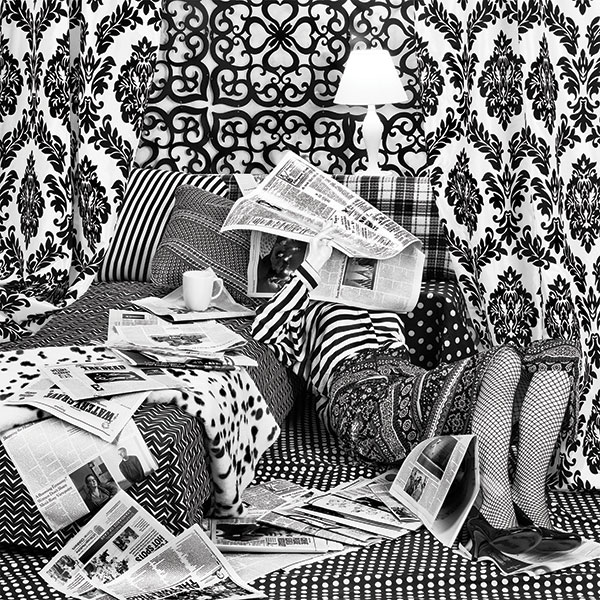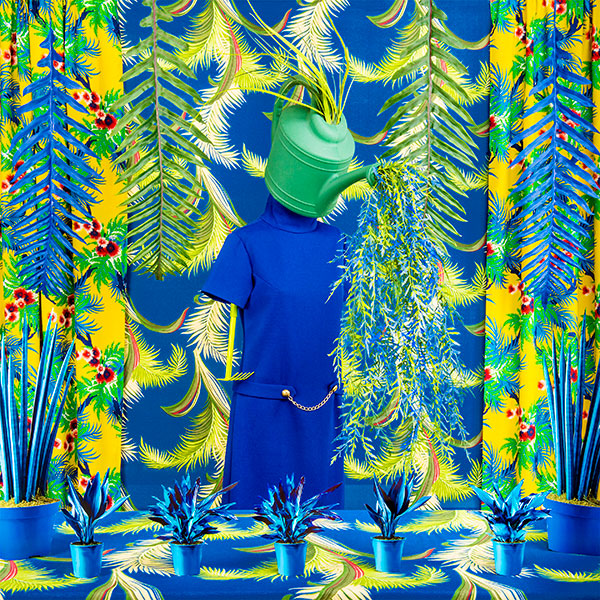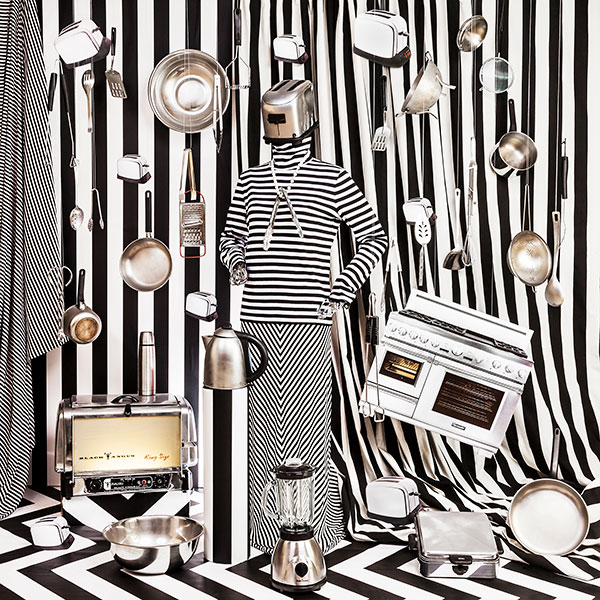Patty Carroll: Investigating Domesticity

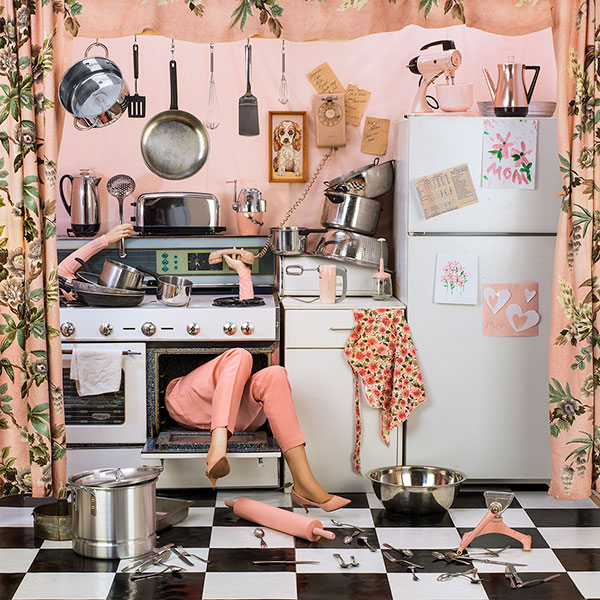
By ANNA DOBROWOLSKI
If you’ve ever felt like you’ve walked in on a crime scene when looking at some of Patty Carroll’s photographs, you are not alone. Carroll, influenced by bright, vintage colors and British interiors, is guilty of one thing: framing it on the room.
Before many of us were stuck at home, Carroll was already reflecting on what it means to be surrounded by so much stuff, whether it be items that act as an extension of our selves, or the media and the politics we consume on a daily basis. Her latest book Domestic Demise catalogs women being ‘done in’ by their physical environment, possessions, labels (or lack of thereof) and, unsurprisingly, their impeccable taste in drapery.
These past few months have set the stage for her photographs. At the start of pandemic, Carroll had to put her art on hold for personal health reasons. Now fully recovered (and her sense of humor unscathed) she has since been conjuring images of women bombarded by reality and putting the pieces together.
I visited Patty Carroll at her studio to talk about her women and how recent events have crept into the foreground of her photography.

CGN: What’s a typical day in the studio look like now? What are you working on?
Patty Carroll: I had this idea about having patches or pieces together, so before we got to the studio, I had bought these carpet tiles and brought back these wallpaper books to start building the scene. Shopping and acquiring the right materials are a huge part of the process. Then, my assistant and I cut out pages from the wallpaper books that we thought would work together. At one point I decided that we need a lamp and a square chair, so I brought one back from Indiana and spent most of the day covering that and the lampshade. I also had to find a dress for her to wear….it takes a couple of days.
CGN: How has your art practice changed over the past couple of months in light of the pandemic?
PC: It didn’t change my practice as much as it changed my perspective on work. I’m still using my woman who is alone in her house, but now she is kind of a metaphor for all of us who are stuck in our houses. The woman is dragging herself around her house, depressed, or watching TV all the time; whereas people are obsessed with cooking, cleaning, and sort of confined doing. The fact that I was working [on these themes] before COVID-19 was kind of fortuitous.
My work took on a different meaning when we all became confined. For example, I have a gallery in Houston, and because times were hard, we were offering things at a discount. We sold a couple, but my perspective was that it suddenly became too close to home. I mean, if you are already feeling claustrophobic the last thing you want is to look at is a picture about a woman being claustrophobic.
CGN: Interior lives have been very prominent in your work. How did you get to this point?
PC: First of all, I love color. The whole work I did for at least three quarters of my career was outside, in the world of tacky, wonderful places. I took many photographs of Fort Lauderdale, Miami and cheap little motels that reminded me of the places we stayed at when I was a kid.
Then, it developed into this whole series of photographing hot dog stands, which started in Chicago. I had no studio experience and all of this work was outside, in the world, and seeing what the world had to offer – in as much color as possible.
Once I got into studio work (Spirited Visions: Portraits of Chicago Artists. Photographs), I was more interested in who the artists were in their work, not who they were in reality. I was trying to photograph someone’s inner life.
Like many photographers, I began photography to try to get away from home. Then, my husband and I came back from England. It was like literally coming home—physically, mentally, spiritually. I was trying to figure what is home and where is it and what does it mean—and how do we express that. It was a round circle. It is really hard to figure out when you are a photographer, because you are confined to reality.
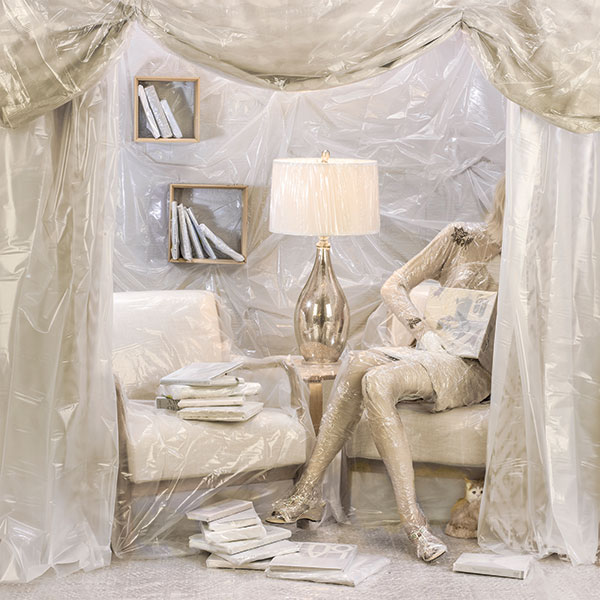
CGN: How do your recent photographs, including those from your book Anonymous Women: Domestic Demise, evolve from your earlier series, Anonymous Women: Reconstructed, Anonymous Women: Draped?
The Anonymous Women series started out with the idea that the home is an integral part of every woman’s identity. She was behind the drapes for the first part of the series. She was very alone, hidden, and so she was anonymously making this home. At the same time, she was getting entangled in the process.
After that part of the series I wanted to introduce stuff, because all women have objects that are important to them—cooking utensils, art, red balls, you name it. People have all kinds of things that they need to surround themselves with as part of their identity.
As I kept adding items (fabrics, furniture, appliances), I realized the figure was very stiff. I thought about how the combination of activities and obsessions in the home and decorations and stuff can overwhelm anyone. This last part of the series is all about that: taking an activity like reading or moving furniture that engulfs the woman and really ‘does her in.’
CGN: Was that what sparked the decision to make short videos of the draped woman performing impossible tasks?
It coincided with two things: the first was that Photoshop introduced video editing, and the other thing was that I was feeling that they were so stiff and the whole idea was just kind of heavy. There’s only so much you can do with a model. The second thing was the time my niece was in town and I told her to get behind the drape and turn the lamp on. She couldn’t find the knob to turn the lamp on because, obviously, she couldn’t see behind the drapes. I thought, “That’s the point!” It was hilarious to watch these women in whacko situations fail because they can’t see what they’re doing.
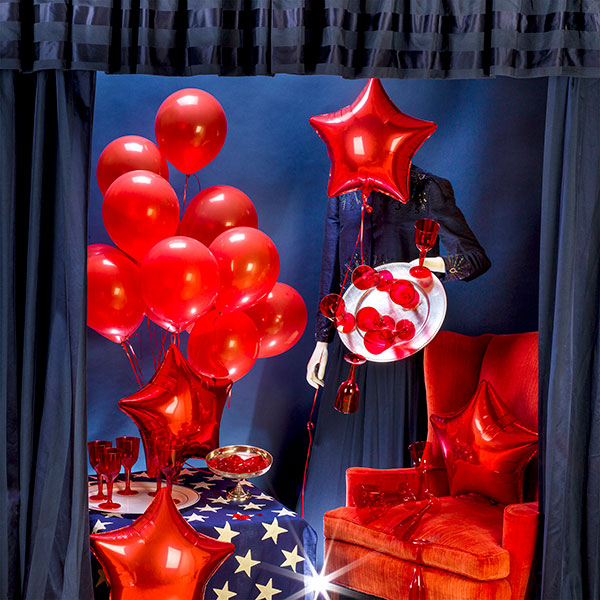
CGN: In what ways does your Woman, the faceless mannequin in the pictures, address current events? What is, to borrow your phrase, ‘doing her in’?
I did a few photographs, such as Campaigning and Cocktail Party, for my Red, White, and Blue series that were about patriotism, and democracy—how the lack of democracy is doing us in. The obsession with all of the politics is just making us crazy. That’s one theme.
I made a couple of Pride pictures in June. Then, in July—we were all wearing masks and cleaning everything all the time and I thought I should just do a picture about protecting ourselves: Protected. Plastic seems to be the material of choice these days. I still want to do one with bandages and stuff, but I haven’t gotten to that yet. It was too close to all my physical illnesses (laughs) and having skin glue and stuff on bits of me. And I thought, “I can’t quite do this yet.”
*
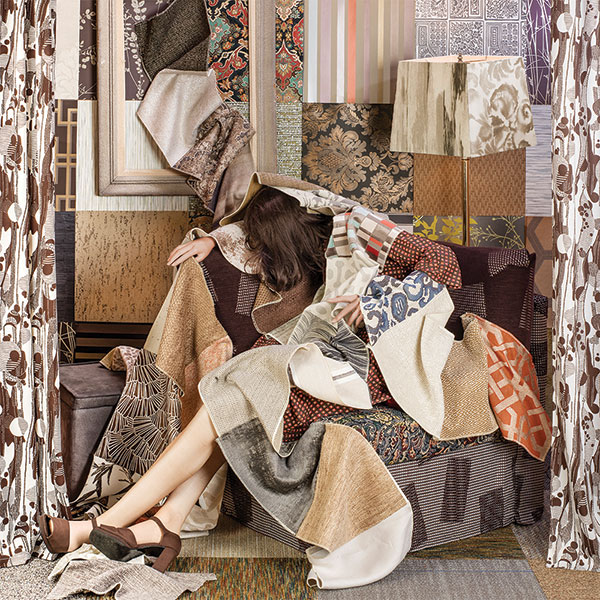
In Carroll’s latest picture, Pieces, the recurring lone woman is slouched in a chair, obscured by scraps of wallpaper samples and mismatched fabrics. In true Dr. Frankenstein-like spirit, Carroll explains, “I wanted to work on pieces to bring her to life.” She continues, “Every time we turn around there seems to be something new and awful happening.” In Pieces, Carroll’s departure from her usual highly saturated color scheme speaks to our political reality: “It feels like people are so upset with the way things are going that a neutral environment seems natural. With that, I’m piecing together life.”
